I always look forward to our annual church anniversary service, held each year on the 3rd Sunday of September. That Sunday, as well as Christmas Eve are the two times a year where the church is reasonably full. But with COVID-19 this year, we would not be able to follow protocol if quite a few people did decide to attend our anniversary. In everyone’s best interest, we cancelled our anniversary service for 2020. It really had me wondering if this was the 1st time in the church’s 169 years of ministry in Hillsdale that the anniversary service was cancelled.
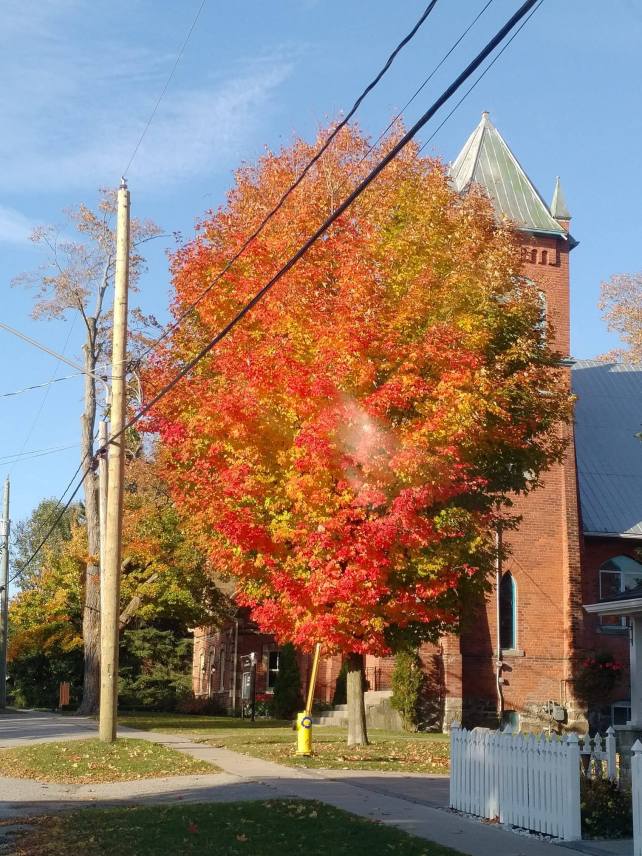
Photo taken by my wife last early October.
When a person delves into history, there is so much that has transpired since 1851. St. Andrews Presbyterian Church was providing worship services 16 years before Canada became a nation. The church was here 10 years before the beginning of the American Civil War, and 14 years before Abraham Lincoln was elected president of the United States of America. There was the 1st World War, the Great Depression and the 2nd World War. In transportation there was the introduction of the railway, the automobile, and then passenger jets. And Hillsdale did not even have a post office until 16 years after the church began.
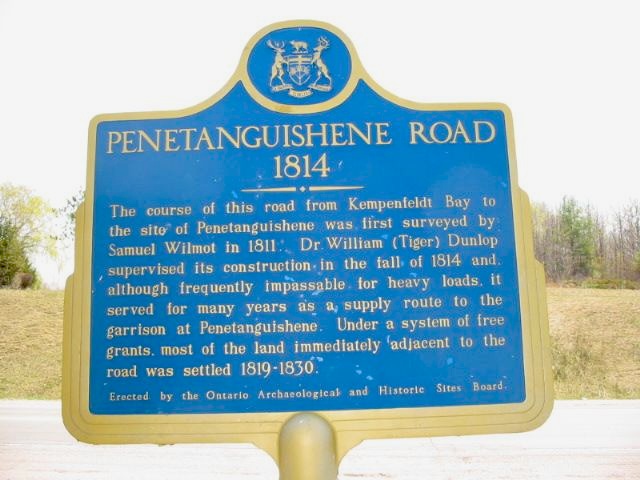
Image Source. The old Penetanguishene Road was built in 1814 as a supply route to the naval base at Penetanguishene during the War of 1812 (the war lasted to 1814). Under a system of free grants (often given to those who fought in the war of 1812) were given out. Most of the land immediately adjacent to the road was settled 1819-1830.
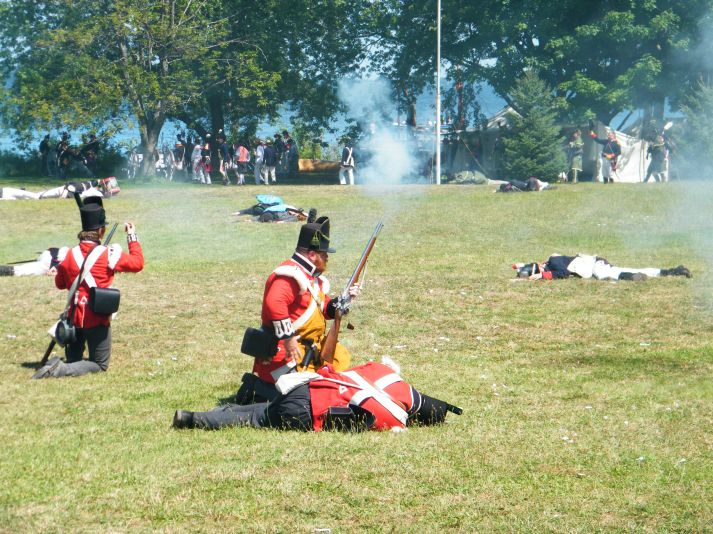
The horrors of war. This was at a reenactment of the War of 1812 at the historic naval base at Penetanguishene. I had a friend participating in this, and my wife and I went up to see the reenactment.
One of the things I love to do is walk through our church cemetery and read the tombstones. I try to picture the people’s lives. What struggles and challenges did they have. What things brought them joy. Sometimes there will be a name on a tombstone that I have seen in our church records (which I have read back to the 1880’s). Many names I have tried to do an internet search, but came away empty handed. What is encouraging is these names are not forgotten to God,
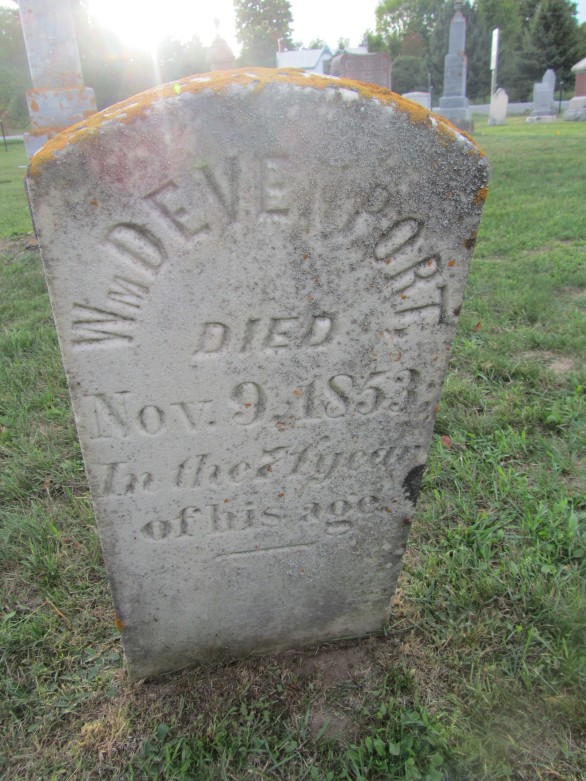
Image Source. William Davenport grave in Hillsdale Presbyterian Cemetery. He died in 1853 (2 years after our church was formed) at 71 years old. It is fascinating to find that this one church family name in which I have unearthed has not only some of the most fascinating historical information, is also one of the earliest. The family name is Davenport. There is even a street in Hillsdale with that name. An early tombstone found in the cemetery was this one in the photo of black settler William Davenport, who died in 1853 at the age of 71. This would point to a date of birth of 1782. William Davenport’s death was just 2 years after our church was formed. Whether or not there was a cemetery there before the church was “officially” established is difficult to determine. Local historian Gary French shared with me regarding old cemeteries, “It is hard to establish the date any cemetery was established. Traditionally a date has been selected which is the date of the deed or the oldest surviving stone. This is not always reliable. There was significant Scottish Presbyterian settlement around Hillsdale from the early 1830s. People die. Where were they buried? I don’t know, but that cemetery might be older than it appears.”
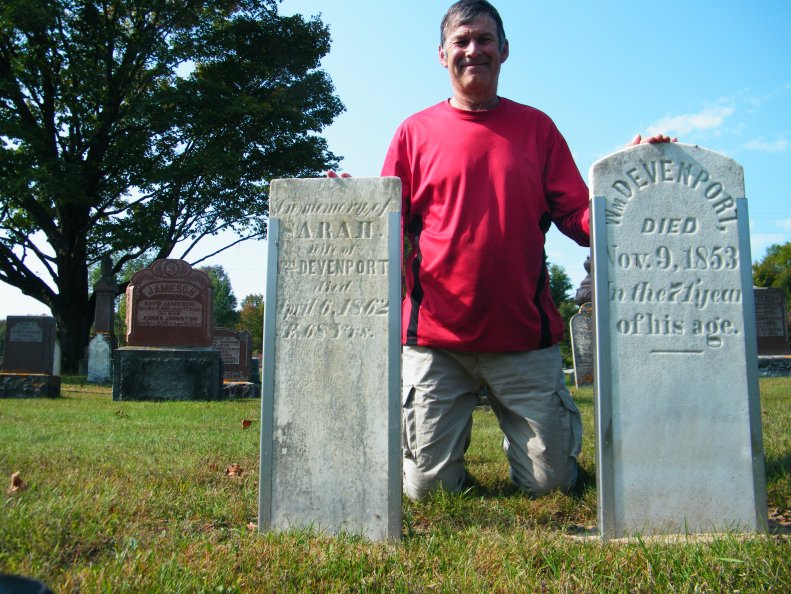
There is not a lot of information on William Davenport’s wife Sarah. Several sources do talk about William and his brother Ben reaching in Upper Canada in 1810. A Springwater Township heritage article includes William’s wife Sarah, who also arrived with them. Very little information is found on how they managed to make it to Upper Canada and freedom. The article does mention “The Davenports were the first settlement family in the Township of Flos. William and Benjamin Davenport, brothers, and William’s wife Sarah entered Upper Canada from the United States about 1810. After a period of several years in the southern part of the colony (some of which was spent at Amherstberg), the Davenports settled in Flos Township in 1819, in conjunction with the Wilberforce Street settlement of Black refugees.” The restoration of the two gravestones of Mr. and Mrs. Davenport was entirely the initiative and entirely at the expense of Davenport descendant Don Graham.
From the website Ontario Abandoned Places it mentions that the very first settlers in the Flos Township area were two brothers named William and Ben Davenport, and William’s wife Sarah. The year was 1819. What makes this extremely fascinating is that they were not only settlers, they were black refugees. The area I grew up in was Oro Township. My childhood home in Oro Township was 20 kilometers away. Oro Township got its name from the River Rio del Oro on the Gold Coast of Ghana in West Africa. This was an area noted for its gold, and where many of the enslaved were taken from. From a book on my bookshelf called “The Story of Oro” , “Oro Township was one of the havens of refuge given to Negroes in Canada after they had succeeded from escaping slavery in the United States of America.” In total 100 African American refugees were given farms in the area from the government. Possibly even the farm I grew up on. The settlement was called the Wilberforce Street settlement. It was named after the British champion for the freedom of slaves. This occurred between 1819-1831.
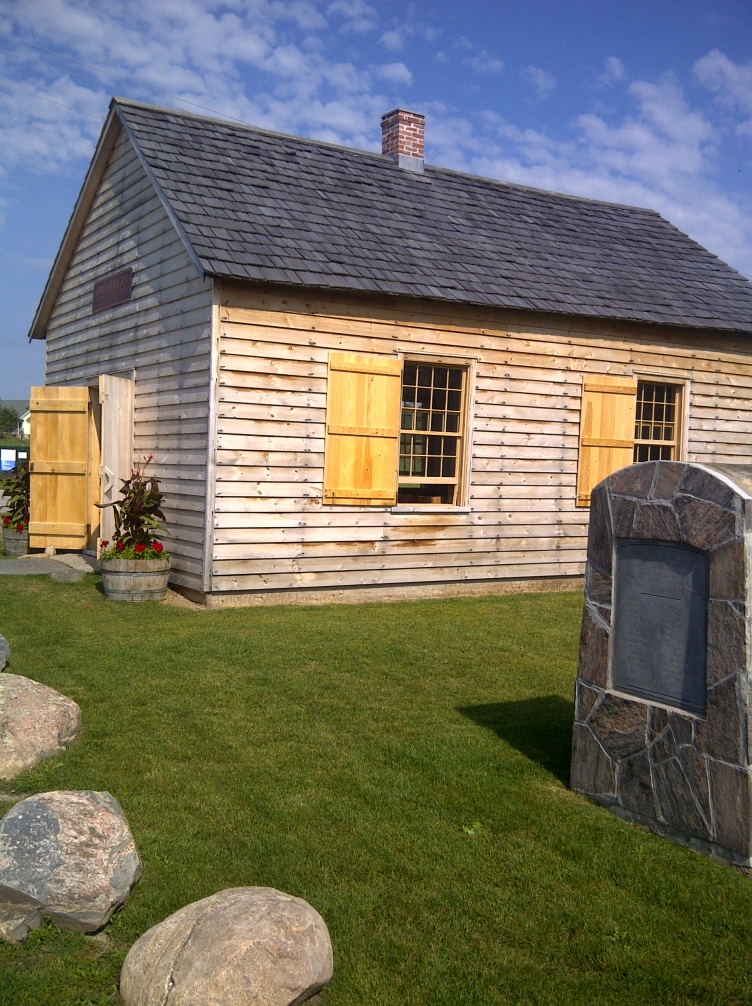
This church named the Oro African Methodist Episcopal Church was declared a Canadian National Historic Site in 2000 and is located just a kilometer from my childhood home. It was built in 1847 by the African/Canadian community. The building was abandoned in 1916 after the black families moved out of the area, Over the subsequent years it fell in a state of disrepair. It was restored on it’s 100th anniversary in 1947. Extensive recent restorations were once again completed in 2016 (shortly before I took this photo).
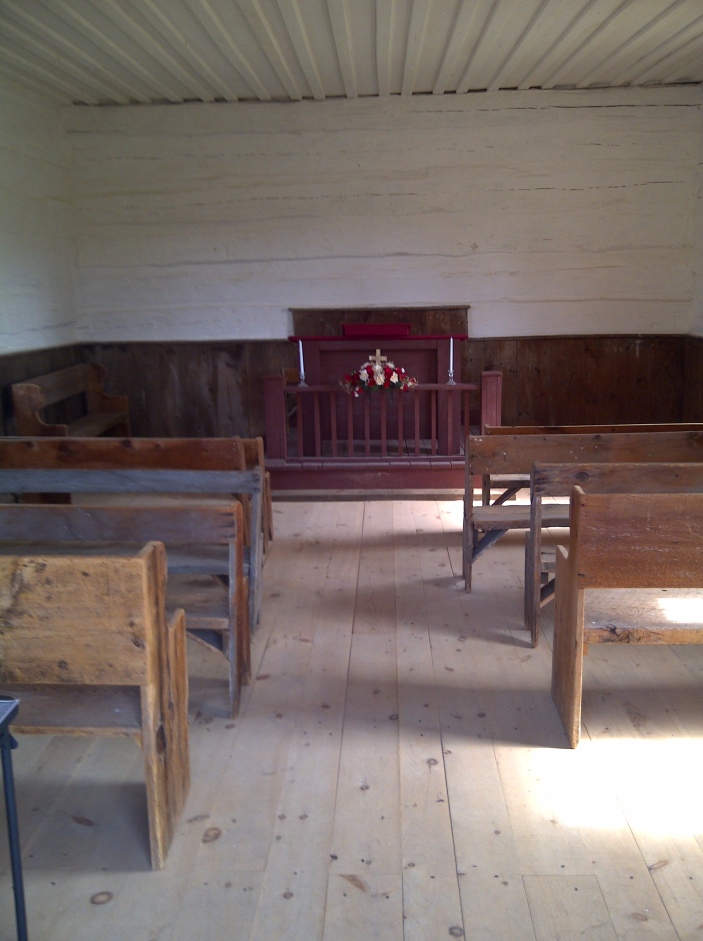
The interior of the church was so simple.
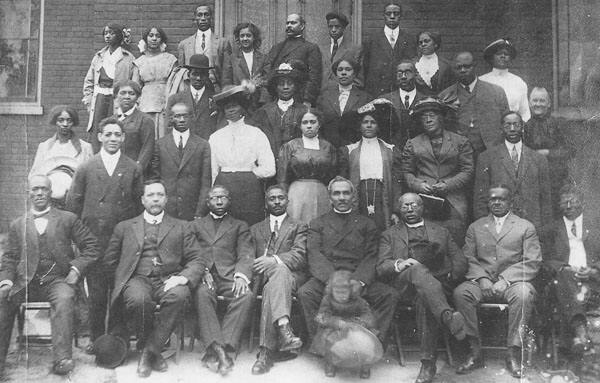
It took me a lot of digging to find any photo of people from the black settlement in Oro. This is from a Facebook page called ByBlacks.com with the caption ” #BlackHistory365 Many of the black settlers did not stay long in Oro Township. The land was frequently of “poorer quality” than the lots adjacent to the Penetanguishene Road. As members of the second wave were located, earlier settlers were selling their grants and moving to urban areas such as Collingwood, Barrie and Toronto, or hiring themselves out as labourers on nearby farms.”
As a kid growing up in Oro I remember the old-timers talking about the descendants of the original slave refugees who were at one time part of the early community. As a kid, I didn’t pay that much attention, but I do remember these coloured people were spoken about with respect. To me looking back to when I was a kid, there didn’t seem to be any segregation whatsoever. They were a part of the community. The words “underground railroad” was sometimes spoken. It took me decades to realize this was not an actual railroad, but was a metaphor. In reading about the black settlements in Oro Township there was two waves. The first wave was 1819-1826, the second wave in Oro was 1828-1831 . To show the kind of respect as an example for the former black slave refugees, it was the passionate community members from where I grew up who worked diligently to preserve the Oro African Methodist Episcopal Church after it was abandoned. These Black Canadians were also pioneers and worked hard to build this country just like anyone else. My community where I grew up did not want them forgotten. Personally, as I have gotten older, I have wondered if there was more to it than what has been spoken. It has often been said that the black people left the Oro area “because the land was of poorer quality.” However the crops that my dad grew on our farm was phenomenal. And that was without the industrial chemicals used in farming nowadays. In messaging with local historian Gary French he mentioned to me regarding the black people’s exodus from Oro, “There certainly were some strong friendships between neighbours, as is usual in farming communities where neighbours had to work together, but it would be wrong to say that the black residents were well treated. If you ask the descendants, you generally get a silence, but I think it a telling silence. The more honest Oro residents told me stories that illustrate how poorly they were treated on many occasions.”

Image Source. Quite disturbing images of a slave trade business, a slave auction ad, and scars of a whipped slave.
Where I currently live in Hillsdale, the historic Penetanguishene Road was built as a land based supply route to the naval base at Penetanguishene during the War of 1812. After the war, the land adjacent to the road was given out as land grants. African-American slave fugitives William (his wife Sarah) and brother Benjamin Davenport, were the first to settle in the area of what is now Hillsdale. A Springwater Township heritage article mentions the three refugees entered Upper Canada from the United States about 1810. After a period of several years in the southern part of the colony, the Davenports settled in this area around 1819. This would have been the first wave of refugee settlement in the area. A very interesting bit of information from a Simcoe County historical article is that the Davenport brothers purchased this remote lot instead of settling on one the free land grants in Oro Township. The land there was considered to be “poorer quality”. William was a master builder and carpenter, who helped build historic buildings such as the old Hamilton Inn, originally built in 1838 on the outskirts of Hillsdale.
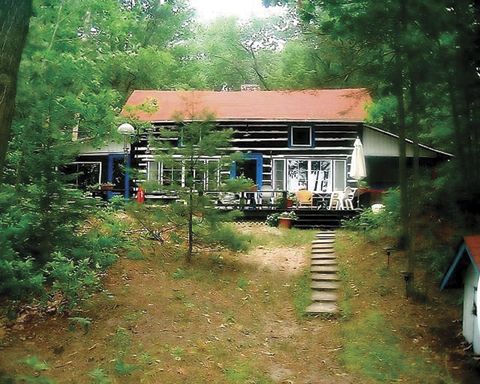
The original Hamilton Inn, built by William Davenport Sr. in 1837-1838 was dismantled and moved to Nottawaga Beach in Tiny Township in 1932 where it became a home.
It is something I never recall being taught in my history classes as a kid, but there was slavery at one time in Upper Canada (Ontario). On July 9th,1793 Upper Canada passed the Act Against Slavery. It was one of the earliest anti-slavery acts in the world. There is no question from the many sources I found that many of the black settlers in Oro at one time would have been escaped slaves. Despite the stories, the black settlement was not a northern stop on the Underground Railroad, according to the Simcoe County Archives. The settlers in the area were black soldiers who defended Upper Canada with Captain Runchey’s Company of Coloured Men. Between 1819 and 1831, black settlement along Wilberforce Street, located along the west side of Concession II in Oro Township, was sponsored by the government of Upper Canada. Among the black settlers in Oro were veterans of the War of 1812. Though it was not the largest black settlement in Upper Canada, the Wilberforce Street settlement was the only one that resulted from government planning and encouragement. The Wilberforce Street lots, as well as some in Concessions III to VI, became home to about 60 black settlers and their families, with a maximum population of approximately 100 people. Settlement occurred in two waves, from 1819-1826 and from 1828-1831.
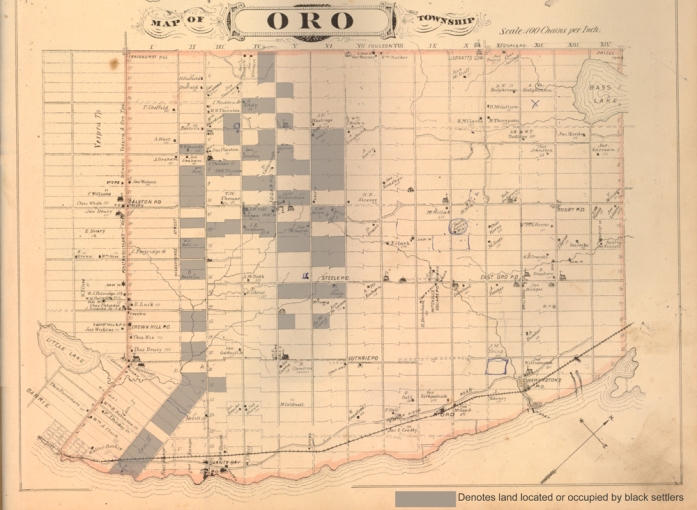
Image Source. Oro Township showing lots highlighted in grey located or occupied by black settlers. Where Hillsdale and where the Davenport brothers settled was another 10-12 kilometers north-west of the most northern settlement on the map.
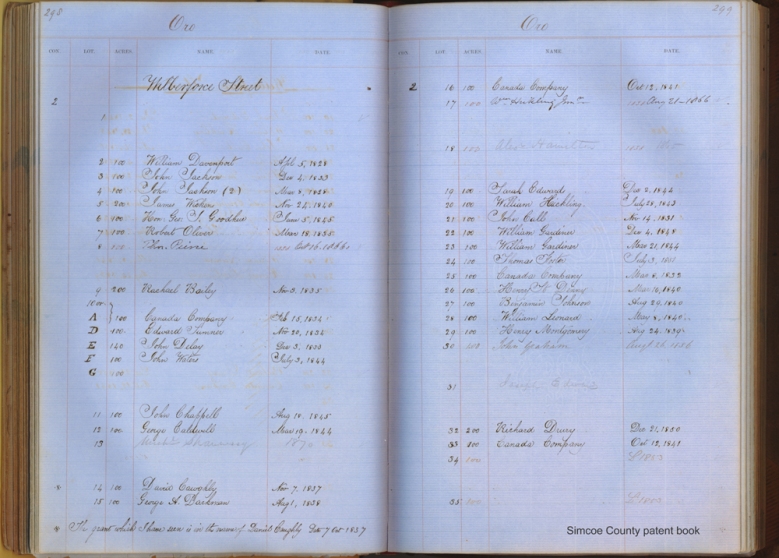
Image Source. Simcoe County patent book showing Wilberforce Street entries. The first entry is William Davenport. So many questions. Did William Davenport own land in both the Wilberforce Street settlement and Flos Township?
Whether the Underground Railroad (not literally but metaphorically a railroad) was or was not part of the Oro settlement, it is still a very important part of Canadian history. Those escaped fugitives on the run to try and reach freedom used meeting points, secret routes, transportation, and safe houses all of them maintained by abolitionist sympathizers and communicated by word of mouth. It was daring and risky. Hiding places were called stations, which included private homes, churches and school houses. Those who aided fugitive slaves were known as conductors. Federal marshals and professional bounty hunters known as “slave catchers” pursued fugitives as far as the Canada-USA border. Using biblical references, fugitives referred to Canada as the the Promised Land or Heaven and reaching the Ohio River (though still in the United States) as the River Jordan between slavery and freedom.
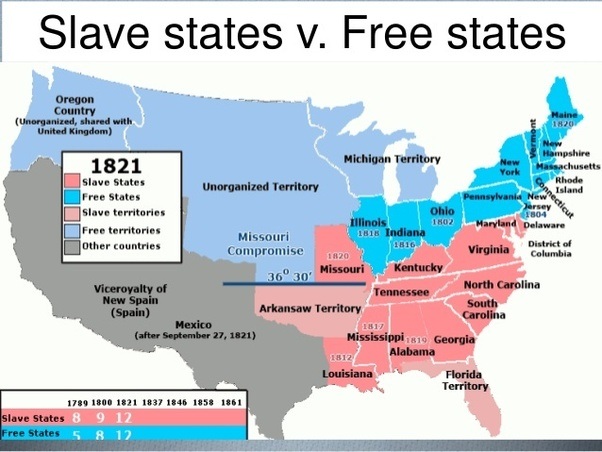
Image Source. The Ohio River marked the dividing line from slave states and free states. African-American fugitives continued to try to make it to Canada for fear of the bounty on them from slave catchers. The Fugitive Slave Act passed in 1793, allowed local governments to apprehend and extradite escaped slaves from within the borders of free states back to their point of origin, and to punish anyone helping the fugitives. What I found most interesting that 1793 was the year Upper Canada passed the Act Against Slavery law. It was the exact same year the Fugitive Slave Act was passed in the United States of America. The year 1810 was when brothers William (his wife Sarah) and Ben Davenport arrived in Canada. Somehow they made to safety in Canada in the years before the years of the “Underground Railroad”. The earliest mention of the Underground Railroad was 1831. By 1819 they became became the 1st settlers at what is now Flos Township. They settled just south of what is now Hillsdale.
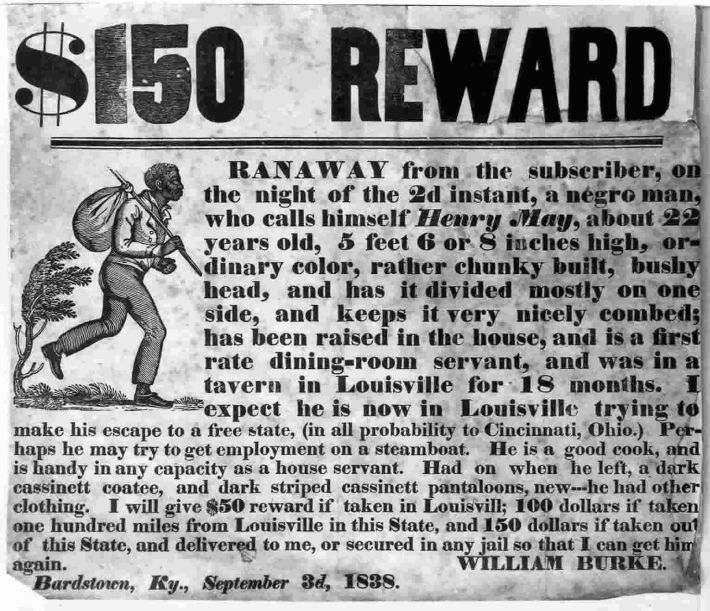
Image Source. Professional bounty hunters known as slave catchers would try and catch the fugitives and return them to the slave master for a bounty reward. Capturing fugitive slaves was a lucrative business.
From an article titled “Songs of the Underground Railroad” from the Harriet Tubman Historical Society it mentions “Songs were used in everyday life by African slaves. Singing was tradition brought from Africa by the first slaves; sometimes their songs are called spirituals. Singing served many purposes such as providing repetitive rhythm for repetitive manual work, inspiration and motivation. Singing was also use to express their values and solidarity with each other and during celebrations. Songs were used as tools to remember and communicate since the majority of slaves could not read. Harriet Tubman and other slaves used songs as a strategy to communicate with slaves in their struggle for freedom. Coded songs contained words giving directions on how to escape also known as signal songs or where to meet known as map songs. There are several songs passed on for generations. In the song “Sweet Chariot”, the Underground Railroad (sweet chariot) is coming south (swing low) to take the slave to the north or freedom (carry me home).”

The O’Neil Tavern and also known as Alma House and Simcoe House Hotel (depending on the time period), this hotel is believed to be the last surviving example from over 47 hotels that once existed along this stagecoach route between Barrie and Penetanguishene. Built in 1882 by William John Davenport..
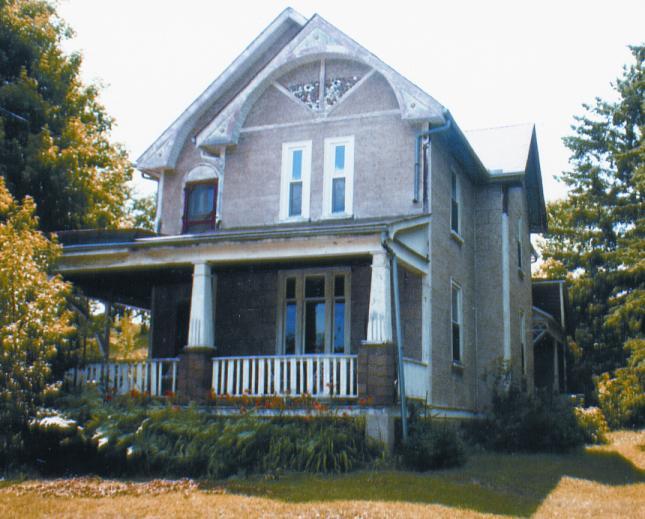
Image Source. Davenport Heritage Home built by William John Davenport for his family around 1902.
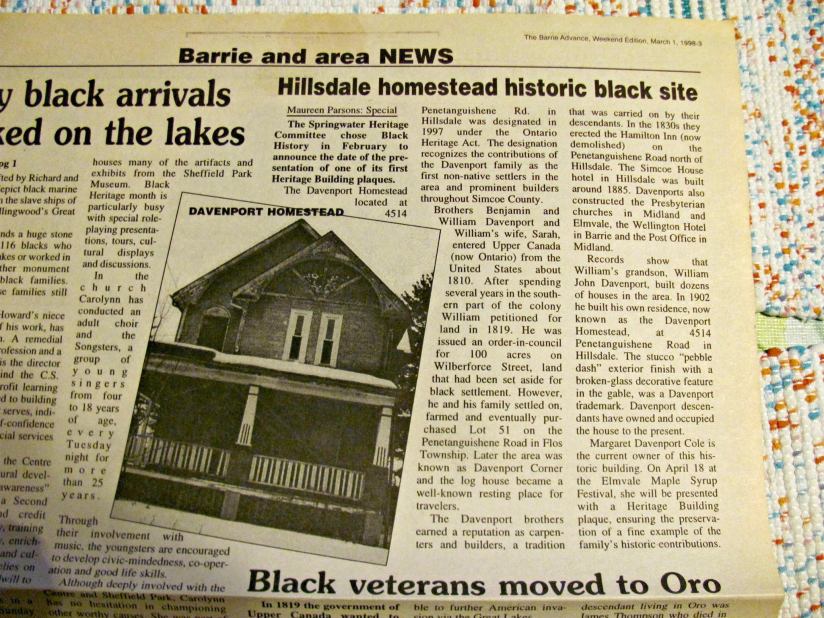
March 1, 1998 Barrie Advance newspaper article on the Davenport House as retrieved from the Facebook group Hillsdale Here and Now April 1, 2015

Image Source. The Hillsdale Jail is regarded as the smallest jail and courthouse currently standing in Ontario. Built in 1906 by William John Davenport.
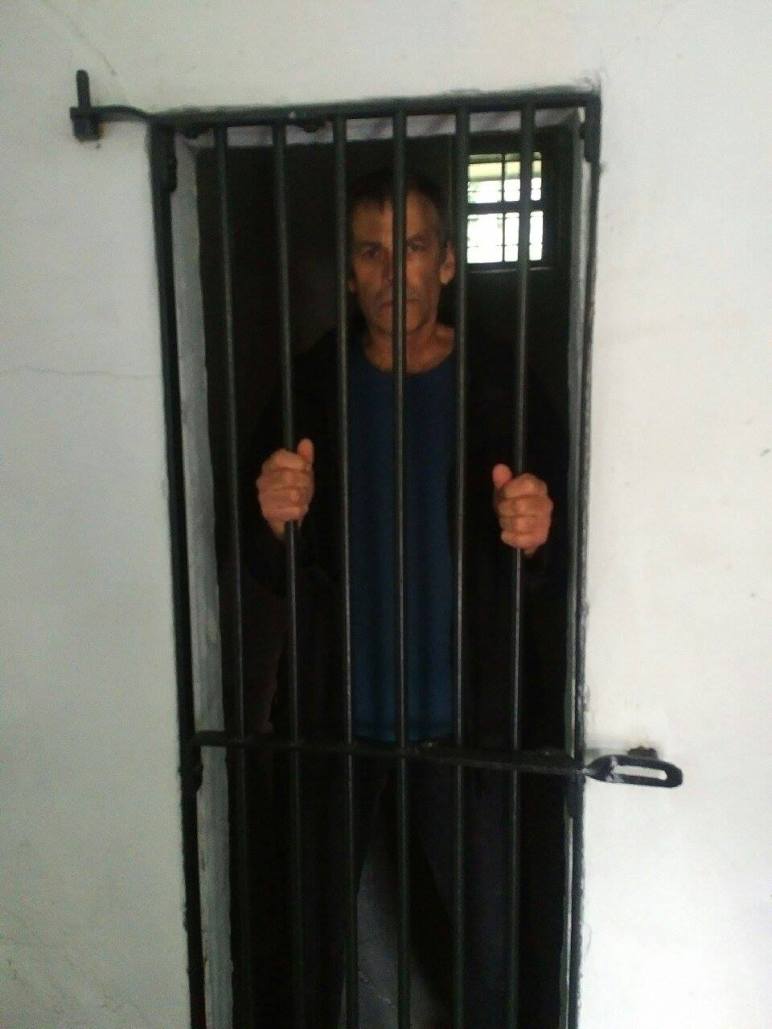
Behind bars in the Hillsdale jail. I won’t go in to details how I ended up in there.
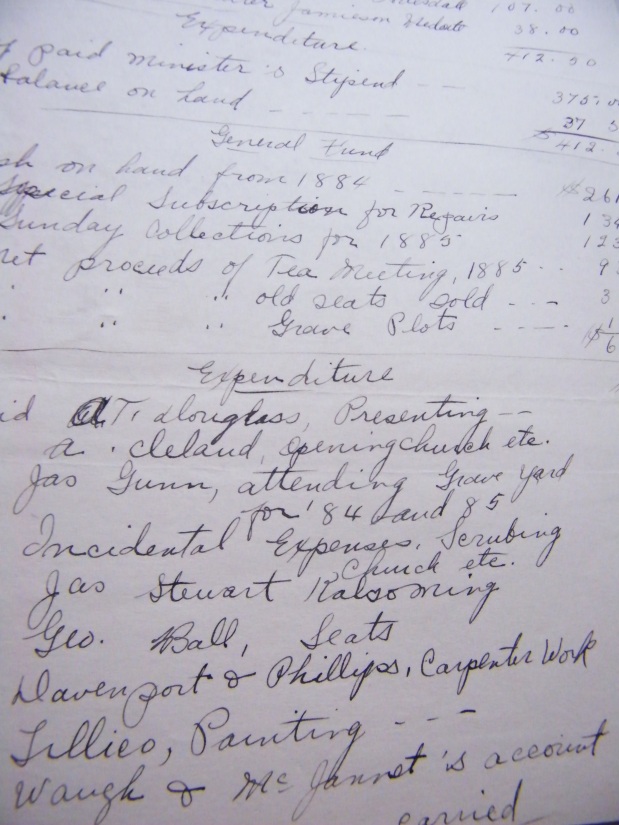
The Davenport name appears several times in our church books from the 1800’s. This 1885 report refers to Davenport & Philips Carpenter Work (3rd line from the bottom). This appears the very same way on several occasions in different annual reports. I am guessing these two builders Davenport and Philips must have had a partnership
In Hillsdale, what remains of the Davenport’s other than the tombstones in our church cemetery and a street in Hillsdale named after this family? Up to just recently the heritage Davenport Home has been in the family. A descendent of the original refugees William and Sarah Davenport was also named William Davenport Because it is the same name, he is often referred to in articles as William John Davenport. William John was also a master carpenter who constructed several buildings in the area. Local tradition and William John’s diaries and records show that he built dozens of houses in the area. Three of them are heritage buildings, the O’Neil House Hotel, Davenport House and the Hillsdale Jail. The Davenport name also appears in our church records over the years. And the most cool thing is hearing the older generation talk fondly about this family who were very much a part of our community at one time. There are still many, many puzzle pieces of the Davenport history in Hillsdale that I have not found. But if I wait to find every detail, this might never be published. As new information comes to light, I will be editing this article again and again. Possibly over many years to come.
I’d like to conclude with a poem in honour of the Oro Negroes written in the book The Story of Oro by Oro resident E.C. Drury. Ernest Charles Drury was farmer, politician and writer who served as the 8th Premier of Ontario from 1919 to 1923. He was the first farmer to become a Premier. The original Drury Farm is at Crown Hill (just north of Barrie) and has been in the same family for over 200 years (since 1819).
The Negro Settlement in Oro Township, Simcoe County
From the darker night of slavery
Through the night they travelled far
In their hearts was the Flame of Freedom
And their guide was the pale Pole Star.
Northward and northward ever,
To the Land of Liberty
Where no man need say, “Master,”
For every man was free.
Honour to these, the lowly,
Like cattle bought and sold
For the venturing, they were bold
To brave the whip and the shackle
To brave the noose and the stake
That they might be men, not chattels
They ventured for freedom’s sake.
O Canada, be this your pride.
As the changeful years succeed
That under the flag a man’s a man
Whatever his name or creed;
Whatever his rank or station,
His poverty or pelf,
A man’s a man with a proud right,
The right to own himself!
For generations black gospel worship has been extremely powerful, as it spoke of a deep faith in Jesus through trials, troubles and tribulations. This is a modern black spiritual gospel song released earlier this year on April 10, 2020 called “Promises” featuring Joe L Barnes and Naomi Raine by Maverick City Music. The chorus reads, “Great is Your faithfulness to me. Great is Your faithfulness to me. From the rising sun to the setting same, I will praise Your name. Great is Your faithfulness to me”.
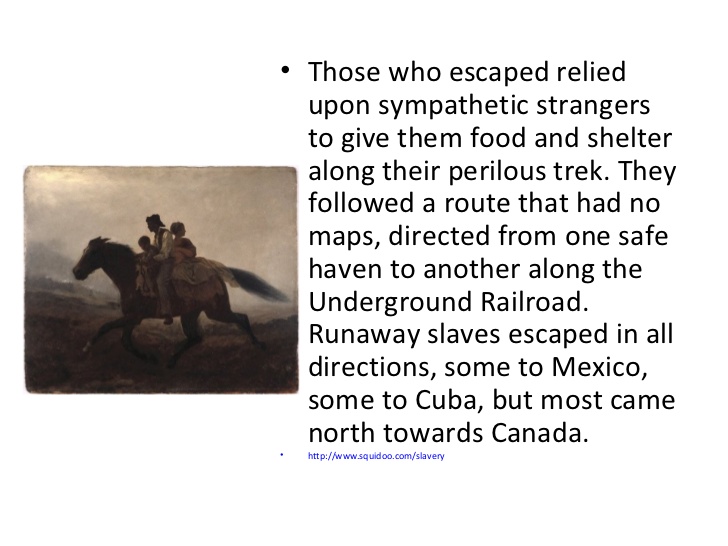




Thank you for sharing this story of the Davenport Family. We are very proud of our heritage and connection to Hillsdale and Oro Medonte township.
Sharon Davenport (direct descendant of Sarah and William Davenport)
LikeLiked by 1 person
You are very welcome Sharon. Your family has such an incredible, inspirational story, and as a longtime resident of Hillsdale, it is such an honour to write about it. Seeing your comment here is so very much appreciated!
LikeLike
This is a wonderful blog. Thank you for this.
LikeLiked by 1 person
Thank you very much, Mark. I really appreciate you taking the time to read, and for your kind words. You are very welcome.
Carl Wright (author)
LikeLike
I really like this, it brought back memories good thoughts and pride in our family. Jay Davenport, son of James and Mable Davenport.
LikeLiked by 1 person
Thank you for dropping by to read and sharing your comment, Jay. So much respect for your family. You have much to be proud of! 🙏
LikeLike
Thank you for this enlightening blog post Carl. I have been researching Benjamin and William Davenport for several years as well as other Black Oro Township settlers and Black veterans of the War of 1812. Today, I found a family tree that had William born in Virginia and I also found that a Davenport family kept slaves there. I would like to clarify Sarah’s death date on her grave marker but I cannot zoom in and still see it clearly on your photo of her grave marker. I would also like to have permission from the photographer to publish the two grave marker photos here in an article. Queries about my research are welcome. My email address is warof1812cdnstories@gmail.com
LikeLiked by 1 person
Hi Fred,
Thank you so much for taking the time to read and share your comment. You can definitely have my permission to publish the 2 grave marker photos. I only took the one photo of myself with the 2 markers. I send the original file, so it should be able to be enlarged when you open it up on your email. The other photo comes from this source.
https://www.findagrave.com/memorial/97376855/william-devenport
If you wish, I can go over to the cemetery and take a photo myself.
Thank you for all your work researching the Black Oro Township settlers and Black veterans of the War of 1812.
LikeLike
Thank you for publishing this. This is more than I’ve ever learned of my heritage as a Davenport descendant. My Grandfather (William L. Kirton) was the grandson of William John. My family never passed down much of the black culture, and my skin doesn’t show their stories, but I hold it in my genetic makeup, possessing the sickle cell gene which apparently originated from Rio de Oro in Africa. When I found out I started looking further to learn where I came from. Being a 6th generation born in Canada, it’s easy to lose your origins. I hope to learn enough about William and Sarah to pass along stories to my son.
Thanks again,
Julie Sadonoja (fb/insta/IN)
Happy black history month
LikeLiked by 1 person
Hi Julia, I have a 6 page Davenport family history that I can email to you. It was written for the Orillia Museum of Art and History. We would also like to know more about this family. There was a facebook post this month on the family. My email address is in the Comment above on Oct. 21, 2022.
Fred
LikeLiked by 1 person
Hi Julie,
Thank you so much for dropping by, for introducing yourself and sharing your connection with William John. This is so amazing to read of the heritage you have. I am very grateful to be living in this village of Hillsdale for the past 31+ years. This village has so much wonderful heritage attributed to your family line.
It is very disturbing of the circumstances that brought your dear ancestors to this area. Such strong people to start a new beginning. Not only that, but to leave such a powerful legacy is astounding.
Thank you!
Carl Wright
LikeLike
Thanks Carl and Fred,
Hope to connect again!
Julie
LikeLiked by 1 person
Thank you for posting this article. I too am a direct descendant of William and Sarah. My great grandfather was William John. Like Julie, my grandmother was William John’s daughter Mary Jane (Jenny). I have been researching the family for over 25 years and am always delighted to find further information. I remember the Davenport home with fond memories. As a child, I spent summers there with my Great Aunt Ann Davenport. I am so happy to see it restored and have a new beginning. Hopefully, the new owners will provide a legacy for their descendants to carry forward. If possible, I would be interested in having a copy of your article for my records. I would be happy to share any information I might have in return. Thanks again,
Regards
Carol Wood.
LikeLiked by 1 person
Hi Carol,
It is really wonderful to read your comment and to learn of your connection in the Davenport lineage. I am so happy to see that the Davenport home has been restored and returned to its glory. It is currently listed for sale. I do hope as well that the new buyers will keep the legacy alive.
I only have this article in digital format, Carol. It can be printed, but the printer icon is quite difficult to find on my blog. If you follow the comments to the top there is the words “Share This”. The line under has Press This, Twitter, Facebook and More. If you click on “more” a printer tab will come up. Click on this and it should print the article!
Carl
LikeLike
Pingback: Critical Thoughts on Critical Race Theory – The Canadian Truth Network